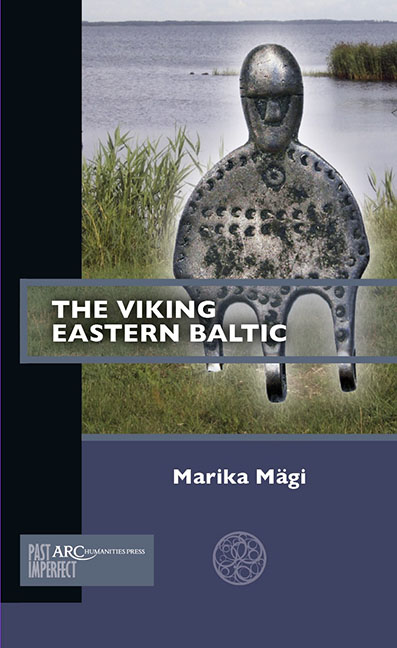Book contents
- Frontmatter
- Contents
- List of Illustrations
- Introduction
- Chapter 1 Different Cultures, Different Modes of Communication
- Chapter 2 Eastbound Routes Gain Momentum
- Chapter 3 Baltic Sea Warriors
- Chapter 4 The High-Point of Scandinavian Eastward Activity
- Chapter 5 End of the Viking Age
- Conclusion
- Further Reading
Chapter 5 - End of the Viking Age
Published online by Cambridge University Press: 20 November 2020
- Frontmatter
- Contents
- List of Illustrations
- Introduction
- Chapter 1 Different Cultures, Different Modes of Communication
- Chapter 2 Eastbound Routes Gain Momentum
- Chapter 3 Baltic Sea Warriors
- Chapter 4 The High-Point of Scandinavian Eastward Activity
- Chapter 5 End of the Viking Age
- Conclusion
- Further Reading
Summary
Several Scandinavian researchers date the end of the Viking Age to the period around 1000 when these societies had formed a state and converted to Christianity. Other researchers propose the mid-eleventh century or even later, around 1100. The eleventh century was indeed a time of crucial changes. Whereas the first quarter of the century was still dominated by old Viking Age patterns, the second half saw a completely different social and political situation emerge.
Beginning of a New Era
Although long-distance trade to the Volga River had waned by the eleventh century, the commercial relations between Scandinavia and Russia continued to strengthen and expand. The Dnieper waterway leading to Kiev and Byzantium was more popular than ever, and the role played by Russian principalities as individual markets kept growing steadily.
From the late tenth century onwards, the burials of Baltic Finns were accompanied by an abundance of grave goods, which has dramatically improved the general knowledge of late Viking Age material culture in the northern half of the Eastern Baltic. Admittedly, the warrior culture characterizing the Baltic Finnic coastal areas was by that time strongly reminiscent of eastern Scandinavia. However, the female attributes and the culture of inland areas as a whole retained their local and ethnic characteristics. By the eleventh and twelfth centuries, Scandinavian-type ornaments, warriors’ jewellery, and weapons had all become an inherent part of the local culture, designed and produced locally (Fig. 10).
No doubt personal relations thrived between the warriors and chieftains on the opposite sides of the Baltic Rim, increasingly overshadowed, though, by the fact that Scandinavians were now Christians while most of the Eastern Baltic was still heathen. Given that the Russian principalities east of the Baltic were also Christian, the Baltic region formed a sort of heathen buffer zone between the Western and Eastern churches, between Scandinavia and the Russian states, both trying to take possession of the lands that comprise modern-day Estonia. Similar attempts were probably made on the Daugava Way, although no written sources are available to confirm this.
In 1007 the young Prince Óláf Haraldsson, the future King Óláf of Norway, also known as Saint Óláf, embarked on an ambitious Viking expedition, first attacking Sweden and then progressing to Sweden's dominions.
- Type
- Chapter
- Information
- The Viking Eastern Baltic , pp. 77 - 92Publisher: Amsterdam University PressPrint publication year: 2019



